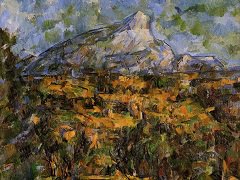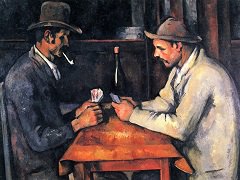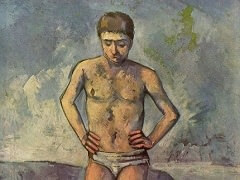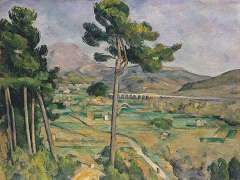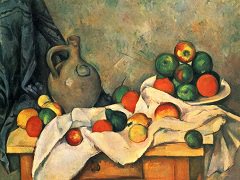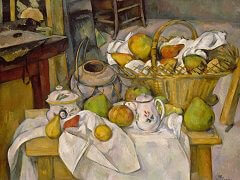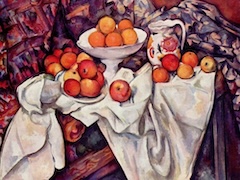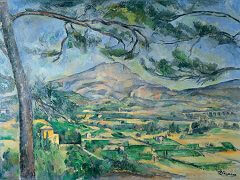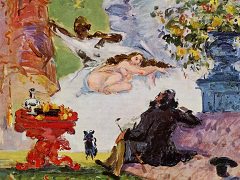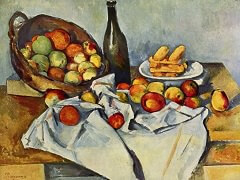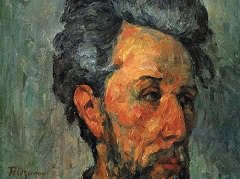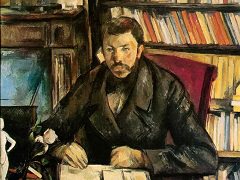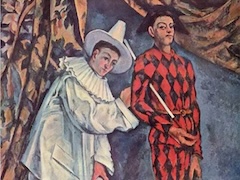Portrait of Vallier - by Paul Cezanne
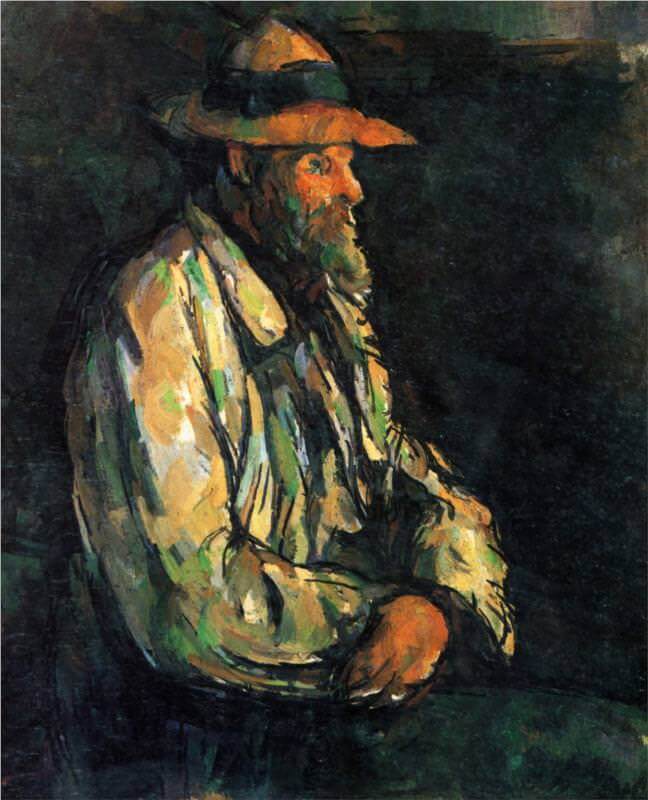
In his late period, Cezanne often paints common people: peasants, servants, simple folk, always with great respect and in a posture and proportioning that gives them dignity and weight. In his taste for the peasant there is perhaps something of the conservative reaction against the modern city world and a desire for an older, simpler, more stable order of things - a common reaction among the French bourgeoisie of the time, which might underlie to some extent the classic turn in Cezanne's art in the 1880's. We observe it, too, in his friend Renoir who shifted from scenes of urban gayety to domestic subjects and idealized types of the mother and the peasant in a style more formal than his earlier Impressionist work.
The masterpiece among Cezanne's paintings of common folk is the portrait of his gardener, Vallier, one of his last works. It is an imposing image of a man, and represents Cezanne's ideal of simplicity and strength in repose, together with his own youthful, robust nature carried into old age.
For a similar conception of man one must turn to Titian and Rembrandt. It concerns an aristocracy which is not founded on power or accomplishment, but on inner strength. This plain man is big without swagger or self-consciousness, at peace with himself without resignation.
The silhouette is grand in its breadth and fullness. In the choice of the profile view and in the clear placing of the half figure against the dark ground, there is a return to primitive design. So clear and compact an outline is uncommon after the sixteenth century. The body has the aspect of an early statue. Such compactness is rare even in the Renaissance. It is not a conventional form here, but a unique, newly devised solution inspired by Cezanne's sense of his subject; it is, in short, an interpretation.
Here the devices of continuity are felt not so much as means of composition or of surface unity as of expression: the beard flows on to the line of the shoulder and arm, as the arms meet in the lines of the sleeves, to create the stirring self-possessed quality of the whole mass of the figure. The features are hardly studied; the character resides more in the body, the posture and large form.


